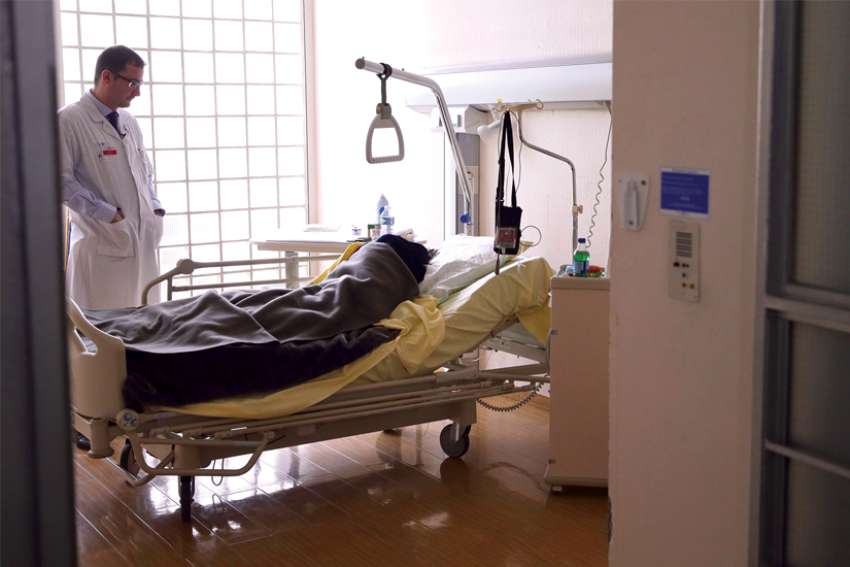The Dec. 6 Leger survey, commissioned by the think tank SecondStreet.org, reported that 67 per cent of the Canadians they polled support the hiring of private clinics by provincial governments to reduce waiting lists.
The survey says 62 per cent of Canadians “strongly support” or “support” allowing Canadians to spend their own money for healthcare services at private clinics, up from 51 per cent in early March 2020.
These statistics are not surprising in a world in which COVID case numbers are going through the roof. Even the triple vaccinated are falling prey to a virus that no longer “plays by the rules.” COVID-related hospital admissions are squeezing out people needing care for non-COVID diseases, accidents and other maladies, causing considerable personal suffering.
“We are facing a significant backlog in procedures and treatments as well as more acute illnesses,” Canadian Medical Association president Dr. Katharine Smart said in a Nov. 30 release. “The legacy of this pandemic — which is still ongoing — will be felt for years to come, and we must start working now to keep the backlog problem from becoming even worse.”
Saskatchewan has picked up the gauntlet, announcing Dec. 9 its plan to privatize some surgeries as a way of reducing the backlog of about 35,000 people currently waiting for surgery.
Premier Scott Moe told the Globe and Mail that his government hasn’t yet decided if the private health-care providers will be from the “for-profit” sector: “We’ll see what comes in on the request for interests and then we’ll make some decisions on that point. What we’ve seen in the past is a mix of offerings.”
At first blush, allowing private health-care providers to fill in gaps in the public system on a short-term basis seems like a logical, effective solution. People facing, or suspected of facing, chronic, serious or life-threatening conditions need screening and treatments immediately; clearing off the backlog caused by COVID is hugely important.
But if strict limits are not put on this temporary measure, and especially if private health-care providers are working for profit, there is a very real danger that initiatives like Saskatchewan’s could encourage the beginnings of a two-tiered health-care system in which those who are willing and able to pay get faster, and perhaps even better, service.
We’re at a vulnerable crossroads. Pandemic commentaries are heightening awareness of longstanding problems in Canadian health care that desperately need to be fixed ASAP.
In this time of fear and panic, Canadian governments and citizens must resist the temptation to turn to long-term privatization as the quick-fix way of speeding up health-care access, increasing efficiencies and resolving the system’s many other challenges.
The U.S. has a heavily privatized health-care system. For example, in 2017, private health insurance coverage was more prevalent than government coverage, at 67.2 per cent and 37.7 per cent respectively according to the U.S. Census Bureau.
In its 2021 report “Mirror, Mirror 2021: Reflecting Poorly,” the Commonwealth Fund ranked the U.S. health-care system 11th out of 11 high-income countries overall; the U.S. scored the lowest in the categories of access to care, administrative efficiency, equity and health-care outcomes.
The report found that, of the 11 countries, the U.S. has the highest infant mortality rate and lowest life expectancy at age 60, with a rate of preventable mortality more than double the best-performing country, Switzerland.
Affordability is a substantial problem in the U.S. Americans are much more likely than residents of the other countries to have their insurance claims denied or to be paid less than expected, and they experience more difficulty getting medications or treatment because of insurance coverage restrictions. Americans have heightened difficulties in paying their medical bills.
The report concludes: “Four features distinguish top performing countries from the United States: 1) they provide for universal coverage and remove cost barriers; 2) they invest in primary care systems to ensure that high-value services are equitably available in all communities to all people; 3) they reduce administrative burdens that divert time, efforts and spending from health improvement efforts; and 4) they invest in social services, especially for children and working-age adults.”
We can do this. We can be true to our Canadian values of caring for others, of putting communal care above selfish approaches. We need to urgently address our health-care challenges within a public, universal system, not build a parallel one for those who can afford it.
(Majtenyi is a public relations officer specializing in research at an Ontario university.)


